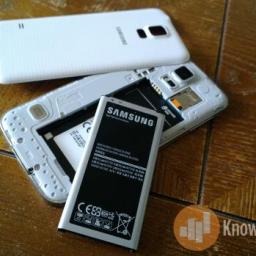Cell phone battery that fully charges in 2 minutes demonstrated at CES
 People want their mobile phones and tablets to last a week from a single charge. But sadly we're still no closer to that goal. At CES this week, StoreDot-an Israeli technology company, has demonstrated a battery that fits inside a Galaxy S3 and can charge from dead to full inside two minutes.
People want their mobile phones and tablets to last a week from a single charge. But sadly we're still no closer to that goal. At CES this week, StoreDot-an Israeli technology company, has demonstrated a battery that fits inside a Galaxy S3 and can charge from dead to full inside two minutes. How does it work? Researchers discovered tiny naturally occurring crystals that were able to store a charge or emit light. The crystals - dubbed NanoDots - are two nanometers in diameter and contain short chains of amino acids called peptides. They cover 'cavities' over an electrode in a standard battery. This extends how much of the battery can be used to create a reaction, which leads to a charge. Through the addition of the NanoDots, the electrode becomes "multi-function" - at one end, the electrode stores electrical energy creating a capacitor, and at the other, lets it flow into the battery's lithium.
In layman's terms, StoreDot has created a 'buffer' that stores electrical current coming from the wall socket over a period of around thirty seconds, then letting it flow slowly into the lithium. Myersdorf says that eventually, the company plans to get rid of the lithium in the battery altogether. The battery life of the cell is just five hours, according to StoreDot, obviously way behind existing Li-Ion batteries. But this doesn't matter when the unit can be charged so quickly; you just give it a quick top up whenever it needs one and within seconds you'll have a full charge.
I guess that's why the current use is to charge an underlying lithium battery.